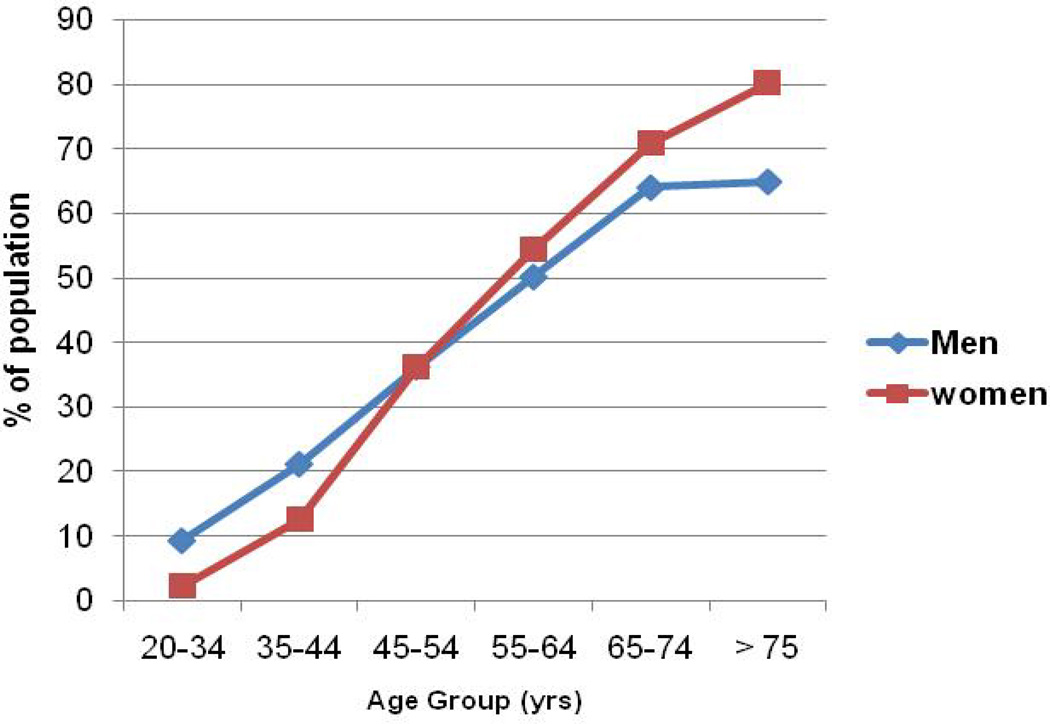Figure 1.
Prevalence of hypertension from 2003–2006 by sex and age in the United States. These data shows that blood pressure increases with age in wealthy, industrialized countries with low levels of physical activity, food abundance, and the social stresses of urbanization. It also shows that blood pressure is generally lower in young women than young men but that the rate of change in blood pressure is higher for women especially in the perimenopausal period (Figure adapted from ref NCHS, (73).

